- Home >
- Senshu Blankets
Over a 100 years of blanket making history
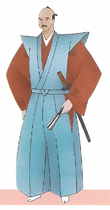
Tracing the origin of Japanese blankets, you can meet Yukimura Sanada and Matabee Gotou.
Yukimura Sanada was the creator of the Sanada plaited cloth known as Sanada braids. He was a tragic hero of the Summer Siege of Osaka in 1615. It is said that Matabee Gotou introduced Sanada braids in the Senshu area of South Osaka, but this may only be a legend. But probably it was Matabee Izumi or Matabee Hamada that actually did it. People may have misunderstood because Matabee Gotou was such a great hero at that time.
The weaving blanket technique in the Meiji era (1868-1912) was generated by combining skills of traditional cotton fabrics from Senshu and the Sanada braid. Don’t you think it is a fun that just one blanket is involved with the roots of Samurai in the Japanese civil war?
Meiji era (1868-1912)
From cow hair clothing fabrics to cow hair blankets. “Shinseisha”, whose corporate symbol was six one-mon coins (Japanese old coins) established.
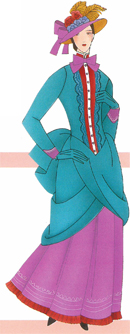
In 1885, the first Japanese blanket was woven in Senshu area, South Osaka. In the same year, the first private railway in Kansai was opened from Namba to Yamatogawa.
In those days, imported blankets called “Aka-Getto” were objects of admiration and desire due to their red color, softness and warmth. But “Aka-Getto” was too expensive for people. Succeeding to a technique of the Sanada plaited cloth, “Shinseisha” developed the products to catch up with and overtake “Aka-Getto” with their pioneer spirits. Inheriting the ambition of Yukimura Sanada, “Shinseisha” adopted his family emblem, six one-mon coins (Japanese old coins), as the corporate symbol.
At first, they wove fabrics for clothing by using wasted cow hairs from Osaka. But the products did not sell well because they were rough and smelled bad. This business failed. Then “Shinseisha” produced the first cow hair blanket. “If cow hair does not work as fabrics for clothes, let's make them for bedding.” This idea came from Sanada's never-say-die spirit. But it was far from “Aka-Getto” quality and called “Dandara Blanket” because of its striped pattern.
New twists and techniques were generated from the struggle with cow hair blankets.
Our pioneers challenged to transform the Dandara blanket into a soft-to-touch blanket somehow.
First of all, cow hair and lime were mixed and pounded in a mortar, immersed in a river to rinse off lime substance and dried. It was just the preparation. The next step is the spinning process. The cow hair was pulled with a bow-like tool, called “Penpen". Only soft fiber was selected and twisted. This is the way how hand spun yarn was produced. It was called as “Tsuginoki” or “Tuginuki.”
It says that the quality of blanket is up to the nap raising. This technique is what made the reputation of the Senshu blankets. When the cow hair blanket was initially woven, the raising technique was crude. The nap was raised by hand with teasels. By struggling with stringing teasels, the technique of evenly raising the naps was generated. a man-powered rotary raising machine was developed. Finally a power napper was invented. They had to go through a variety of techniques from the preparation to the finishing nap raising. The reason why they succeeded in innovating is that they did not give up dealing with cow hair which was the very difficult material.
Export of cotton blankets boomed during Japanese-Sino War and Japanese-Russo War.
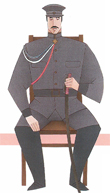
Even innovating new techniques, cow hair blankets are still just cow hair blankets. It would never be like “Aka-Getto”. They were just used for rickshaws rugs and military warrant saddlecloths.
It is sad that only technique is developed while product value does not follow. They were trying to renovate those techniques because they came up with ideas using cotton instead of cow hairs.
Cotton blankets, which were developed a little later than cow hairs’, were influenced by Japanese-Sino War. The cotton blankets were chosen to get into the Chinese market. The market went on expanding because reasonable cottons matched the demand. After Japanese-Russo War, the market was much larger than before.
After the First World War, Senshu blankets overtook the European industry which controlled the market at the time. European blankets sales fell off. You can see that Senshu blankets were admired throughout the world earlier than Japan.
Traditional blankets were closer to clothing than bedding since “Aka-Getto” was first imported.
The word of “Aka-Getto”, as we say, a red blanket was used until around 1930. Kojien (Japanese dictionary) describes “Countryman, country hick and an inexperienced traveler”. We do not know exactly what mean by that, but a countryman visited the city with a colorful blanket as a mark. That was the origin of “Aka-Getto”.
As you see that, between 1868 to at least 1912 “Mofu”, blanket in Japanese, was called in English. It sounded very modern to Japanese.
Kakumaki (large square winter shawl) is still used in cold areas. Komako, Geisha of the hot-spring was wearing the red blanket as described in the famous novel “Yukiguni (snow country)” by the great author Yasunari Kawabata.
Currently the flower pattern blankets are popular in Japan but it is rare in the rest of the world. It might be influenced by the past experience in which blankets were used as clothing material rather than bedding.
Taisho era (1912-1926)
Movement from cotton to wool. Specialization started. Senshu blankets favored by the era.
Cotton blankets peaked around 1912. We received telegraphed orders in units of a thousand just by mailing sample patterns without sending physical samples. It was unbelievably good time! In 1917, cotton blankets production increased to over 1.55 million sheets which was ten times that of the previous year and also 400 times that of the last half of the Meiji era. Production volume was leapt dramatically.
However, the abnormal export boom calmed down slowly after its peak. The domestic market increased taking over from the international one. European blankets sales fell off, our long imported “Aka-Getto” was in short demand in the market. In those days, Senshu industry shifted products from cotton to wool blankets. The Japanese blanket industry which had started from our favorite “Aka-Getto” through using cow hair, the development of cotton and finally succeeding with wool blankets.
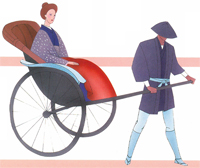
When the domestic share of Senshu blankets was over 75%, the production system dramatically shifted. Complicated blanket processing was operated by specialist, which is “the social division system”. For instance, there were specialists for spinning, weaving, and nap raising respectively. After taking charge of that part of their field, it reinforced streamlining and competition.
In 1918, 35 years after the first cow blanket was produced, Osaka was affected by the rice riots and it led to the startup of social welfare such as an employment agency and city-provided housing.
Showa era (1926-1989)
The victory fell into the dark age.
The Senshu blankets firmly dominated the market share nationwide and steadily implemented production specialization. It easily overcame the depression after 1926.
Kansai area was drastically hit by the Great Depression in 1929, Manchurian Incident in 1931 and the natural disaster Muroto Typhoon in 1934 in which its maximum wind peak was recorded momentarily 60 meters. Senshu blanket industry was continuously supported by the expansion of export and domestic demand. The peak of the business was in1936. The industry scale at that time recorded as follows “approx. 250 textile fabric mills, around 10 woolen spinning mills and 5 processing mills accumulated earnings of 20 million yen a year.” You can imagine how big 20 million yen was. The current National Diet Building had been completed in that year by spending 26 million yen and 19 years of construction.
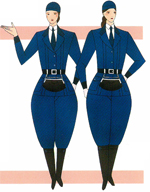
But the Sino-Japanese war in 1937 was triggered by a Marco Polo Bridge Incident. The booming Senshu blankets was dragged down into the chaos. Although the Senshu blankets were relying on cotton from British India and the United States, import restrictions were exercised.
As the substitution for cotton blankets, Staple fibers were compulsory mixed Into the cotton. The longer the war extended, the more the economy was forcibly controlled. The import volume of cotton and wool in 1938 decreased to less than half of that of usual years. The restriction on manufacturing and sales of cotton was extended.
In 1940, people had to get sugar and matches by vouchers, household fuel through the registering system, milk products by allocation under government regulations. In 1941, rice, sake, salt and miso were distributed through the passbook system. In 1942, all the clothing materials were strictly distributed through the voucher system. Even for those who had money could not buy anything without them. People had to give up underwear or socks for the year in order to buy a pair of blankets instead, as it was 40 points valued out of provided 100 points of clothing voucher in a year. On top of that, clothing materials were mainly made from staple fibers. Even the Senshu accepted staple fibers for blankets.
Pioneer spirit fully alive during the dark age
Although the Senshu blanket industry was frustrated with staple fibers, it doesn’t mean that its motivation for research and development had wane. Against the dark age, the pioneer spirit was tremendously maintained.
One of them was a printing technique. Blankets with printed pattern were more creative than woven Jacquard, so they could increase the demand for blankets. We came up with the epoch-making idea of weaving plain blankets, keeping them as inventory during off-season, printing patterns on them and selling them during peak season depending on sales request.
It was a challenge to print on a thick blanket. Finally, we succeeded in 1938 after struggling with the penetrating agent and discharge resist. But at that stage of marketing, we judged that the result might have failed. We predicted there would be a mix‐up at the processing mills since the ordinary and plain blankets were operated together during peak-season because of the industry structure which was perfectly divided into frameworks. Eventually, the unique printing technique was not launched. The Senshu blanket industry did not abandon it. It was because of this technique that the industry was boosted right after the war.
Furthermore, the mothproofing, which is common nowadays, was developed and fully progressed around 1935. It was interrupted by decreased blanket demand along with the impact of Sino-Japanese war. The industry was on the verge of extinction. Ironically, it was true that the manufacturing of military blankets saved the industry. The profit from selling military blankets was so huge that it was donated to the government to purchase two aircrafts. It is said that these aircrafts were named “Japan Blanket” and “West Japan Blanket” respectively and carried out the duties.
Evacuated people and demobs gave about convenience of blankets.
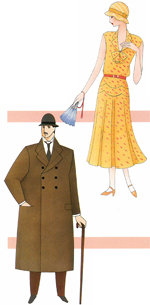
The Second World War was over suddenly. Everything was burned and destroyed. In 1945, 60-year of tradition and victory were reduced to ashes, the blanket industry in Senshu seemed to be impossible to recover.
Fortunately, we were able to receive orders of blankets from GHQ to export to Thailand. This brought about a dramatic change for us; we were rapidly able to rebuild the devastated facility making it possible for the labor force to return to Senshu once more. In 1949, raw hair was released from the list of controlled items. Clothing materials were in short supply. People eagerly bought as much as they could afford. Once we wove it, the money was rolling in. This was the weaving boom. In addition, a fiber boom occurred in 1950, signifying that the textile industry was regaining strength. No matter how much we produced, we could not keep up with the demand. In 1955, maximum output reached 10 million, the same level as the peak before the war. The demand for blankets could be said to be on a par with the demand for electric appliances.
One of the reasons for the crazy boom of blanket was because people started to realize the ease of use and warmth. It was led by the military experience, evacuation and withdrawn blankets from the occupying forces. Another reason is that most people were westernized after the war generated the blankets demand. Not only such external factors, but also another major reason was Senshu’s effort there. They developed the staple fiber blanket technique. It allowed spun rayon blankets to be made at a reasonable cost and to feel almost pure wool soft. And also, the printing technique provided colorful blankets fitting into our new life. It was gracefully appreciated.
Bargain sales of blankets. A booming economy caused the biggest mess after the war.
It looked like everything was fine. “Happy events tend to be accompanied by problems.” It was well explained about the situation because there was a devil in Senshu Blanket Industry.
It looked like everything was fine. “Happy events tend to be accompanied by problems.” It was well explained about the situation because there was a devil in Senshu Blanket Industry.
In 1961, unregistered machines were 500. It increased to 1,000 in 1962 and 2,000 in 1963. In the same year, the registered machines were 3,000. One third was unregistered. Yearly blanket production was around 4,500 per and the total gross production was 25 million. At the time, total demand of blanket was 20 million. They faced critical overproduction.
Between fall-winter 1963 and 1964, it became the issue.
Blankets were offered at less than a half price and at bargain sales. On the other hand, small business, the subcontractors were also hit by decreasing labor cost facing the biggest challenge after the war.
Through trial and error, various useful blankets were created.
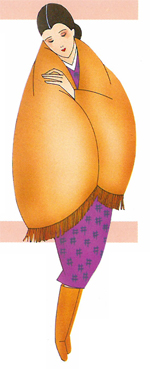
To cope with the disorder caused by overproduction, Senshu Blanket Industry Association certified all non-registered weaving machines so owners of those machines became 'members' to encourage working conditions and wages to be regulated.
At that time, they did not communicate well or collaborate with others. The creation of this registration led them to an understanding of corporation and teamwork. Also, small mills recognized the importance of fair wages because it was more effective for improving products quality other than long working hours.
However, reduction of working-hours and production adjustments were not enough to survive in the challenging time. Therefore, blanket makers tried to diversify the products, and so many new types of blankets were produced during this time. That was exactly “Necessity is the mother of invention”. For example, “Electric blanket”, “Child blanket”, and “Kotatsu blanket” were produced around 1960.
The concept of the blanket beyond bedding inspired many ideas such as “Blanket Tanzen”, “Kaimaki”, “Cha-baori”, and “Rug”. It was the beginning of an "idea rush". Their positive attitude led to the first TV commercial. This was in November 1963.
In 1961, tufting machines were newly installed in the production process which had not changed for a long time. It was a revolutionary change. Subsequently, the most advanced facilities like a quilting and Rachel were also introduced. Additionally, nap raising technique was improved. The technique of automatic reversing blanket and connecting machines were innovated and helped to save power. Nap raising technique improved blanket texture and contributed to the expansion of demand.
Present
Facing an age of the high specification blanket, we have established a new resolution for the next 100 years.
In 1973, Meyer blanket was developed, replacing fabric and tufted blanket with a new genre of blanket.
Processing, printing and surface fabrication techniques which created texture were developed with ever-increasing speed. The age of the high specification blanket had arrived. “Purple blanket boom” in 1971 illustrated this. A legend says “If you use a purple bedding in the year of Xinhai that comes once every 60 years, you will have a long life.” The demand caused by the legend created an unprecedented boom; and purple blankets sold in huge numbers. Sky, rivers and houses in Izumiotsu were covered with purple and all of their blankets as well. At the end of 1971, all blankets were sold out.
However, since the blankets had already been consumed as durable goods at that time, the demand for blankets turned into the one for replacement. It decreased after the peak in 1970 and 1971. Furthermore, globalization increases the number of imported goods. The industry faced an extreme challenge. More than 120 years have passed since blankets were developed in Japan. During this period, we went through struggles and studied through trial and error in order to allow blankets to take root in daily life. When touching a blanket that fits in our living life, we really appreciate the pioneers who toiled in hard times to create innovative blankets.
Today, we continuously keep working on blankets which the pioneers have established for our future, development and prosperity.





